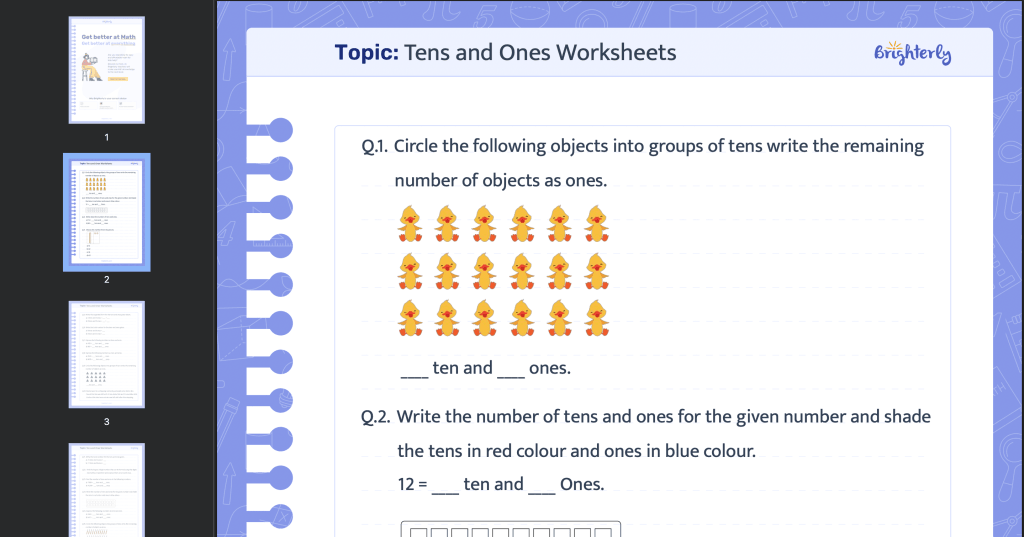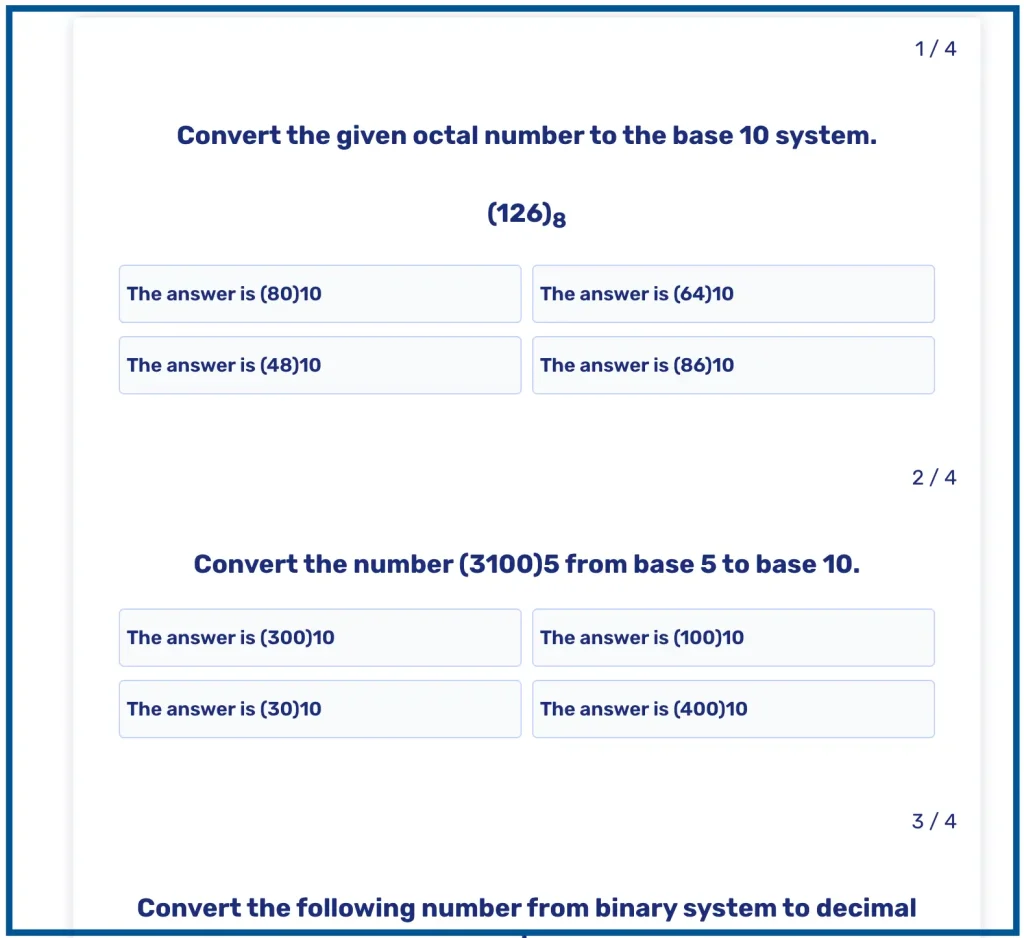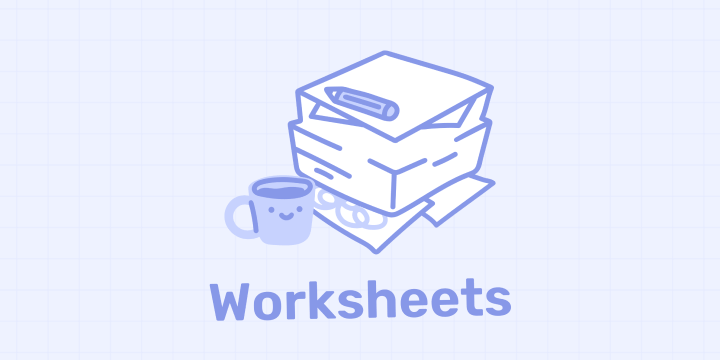Tens and Ones Worksheets
reviewed by Camille Ira B. Mendoza
Updated on April 26, 2025
Tens and ones worksheets help to master the fundamental concept of place value and set the stage for more complex arithmetic operations. Based on top-tier educational resources, Brighterly offers tens and ones worksheets with answers free to use for everybody.
Tens and ones worksheets PDF free download: Examples
Here are some exercises from Brighterly worksheets to help your child in learning tens and ones.

Grouping real-life objects
Brighterly worksheets contain several exercises on grouping real-life objects and drawing tens and ones. Also, steadily increase the complexity level of dissecting tens and ones in 2-digit, 3-digit, and 4-digit examples to prepare your kid for more complex math operations.
Finding tens and ones in visual reality is the easiest way to make abstract concepts tangible. Drawing is another effective way to make the concept of tens and ones tangible, involving the creative and motoric skills of a child while learning.
Printable free tens and ones worksheets [download for free]
The tens and ones worksheets by Brighterly are not just another set of papers to work on. They are a meticulously crafted educational tool aimed at nurturing a child’s love for numbers.
More 1st grade worksheets
- Ruler Measurements Worksheets
- Addition Word Problems Worksheets
- Commutative Property Of Addition Worksheets
- Making 10 Worksheets
- Number Sequence Worksheets
- 3D Shapes Worksheet
- Reading A Tape Measure Worksheets
Provide your child with all the resources needed to be at the top of the math class!
Benefits of using tens and ones worksheets PDF
- Visual aids
- Real-life scenarios
- Progressive challenges
- Interactive exercises
- Feedback and assessment
Tens and ones worksheet – benefit #1: Visual Aids
To make learning more interactive and engaging, Brighterly worksheets incorporate visual aids like base-ten blocks and number rods. These visuals allow children to understand better and distinguish between tens and ones.
Tens and ones worksheets free —benefit #2: Real-life Scenarios
The worksheets present real-life scenarios where children can apply their understanding of tens and ones, making the learning experience more relatable.
Tens and ones worksheet – benefit #3: Progressive Challenges
The worksheets are structured in a way that introduces children to the basic concept first and then gradually progresses to more challenging exercises. This ensures that the foundation is solid before moving on to more complex problems.
Free tens and ones worksheets – benefit #4: Interactive Exercises
Apart from traditional problem-solving, the Brighterly worksheets include puzzles, games, and coloring activities related to tens and ones. These exercises make learning enjoyable and ensure that children are excited about their math sessions.
Tens and ones worksheets free – benefit #5: Feedback and Assessment
It’s essential to measure a child’s understanding periodically. Some worksheets come with a self-assessment section, enabling both parents and teachers to gauge a child’s progress and areas of improvement.
Free tens and ones worksheets and tests for practice
Through engaging exercises in Brighterly’s bundles of tens and ones worksheets, children can become fully equipped for future mathematical accomplishments in the future—especially if this knowledge is combined with practice problems on numerals and numbers worksheets.

Explore more free printable materials from Brighterly in our complete set of math worksheets!








